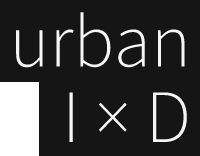Manu Fernandez: I must start with my own personal experience involved in the UrbanIxD project activities, as it has been one of the first times I work on a direct link with interaction design as a field. Coming from a background on urban policies, sustainability and civic engagement projects, I found myself in a challenging position, as if I was entering an uncharted territory to me. What can I bring to the table? What is this field all about?
I guess this field, urban interaction design, is a merge of practices that is happening right now. In fact, lots of people are doing it without even noticing or even calling it UrbanIxD. As such, it is not constituting anything, but adding glue to approaches and traditions that used to work in silos and in the last few years are discovering each other´s methods and tools to create projects, devices and processes aiming at fostering public life in cities. This is at least the way I try to find my personal contribution and the way urban studies and urban practitioners (generally speaking, everyone active in understanding the way urban life occurs and the way public policies influence our lives or promoting local projects).
Urban Interaction Design: Towards City Making as a reference text, but also the collaborative process through which it was developed, comprises a well-rounded proposition on how to grasp the coming together process of approaches that find in UrbanIxD their common ground. In this manner, those involved in making the city turn out to be more than the usual suspects, at least in the narrow vision urban planning has tended to understand the question of how to create more human cities. The experience of living in the city requires a trans-disciplinary outlook to design spaces, buildings, interfaces, services, platforms and any sort of enabling mechanism if we want to succeed in encouraging ownership, appropriation, awareness and engagement in public life in cities
Urban life is, in fact, a continuous flow of interactions or, at least, this should be the main focus of urban projects whatever the field or the level of implementation. If cities can be described as life between buildings, the dynamics of social relations are the core interest of urban interaction design projects. These projects can be designed as a particular mix of the three main components (urban-interaction-design), but always considering the implications of the networked society. This implies that the generalization of technology, the renaissance of public space, the claims for more democracy or the new forms or social activism must be present in any project expecting to be meaningful.
This is, very briefly (and I need to refer to Urban Interaction Design: Towards City Making for further reasoning), how I would need to explore the significance of UrbanIxD. As mentioned before, this confluence is already happening, or at least can be traced through projects, practitioners and organizations getting their hands dirty designing new kinds of urban actions and interventions. In this sense, the question is not whether this field is necessary or not, but how to use it as a compass that guides the city making process in the coming years for citizens to be part of it.
This post is part of the online conversation about urban interaction design: June 2014
